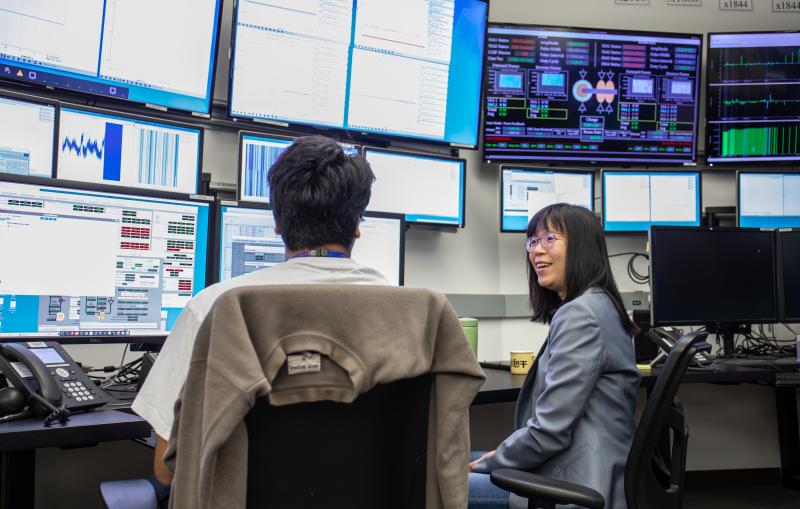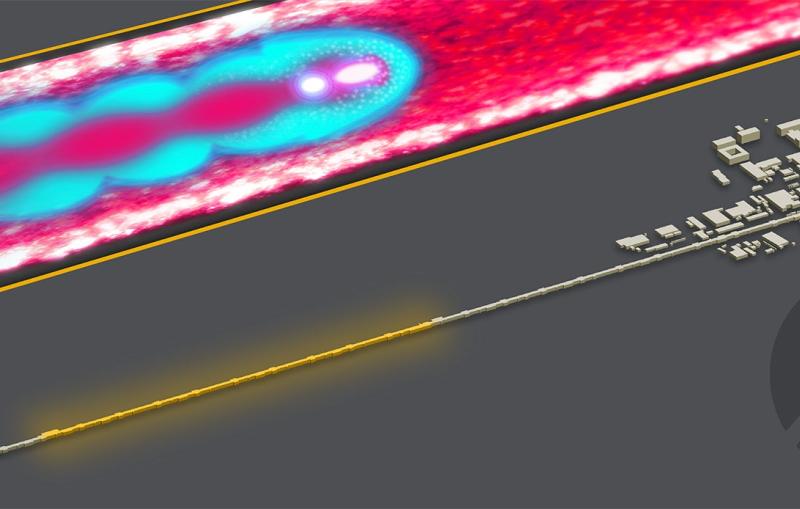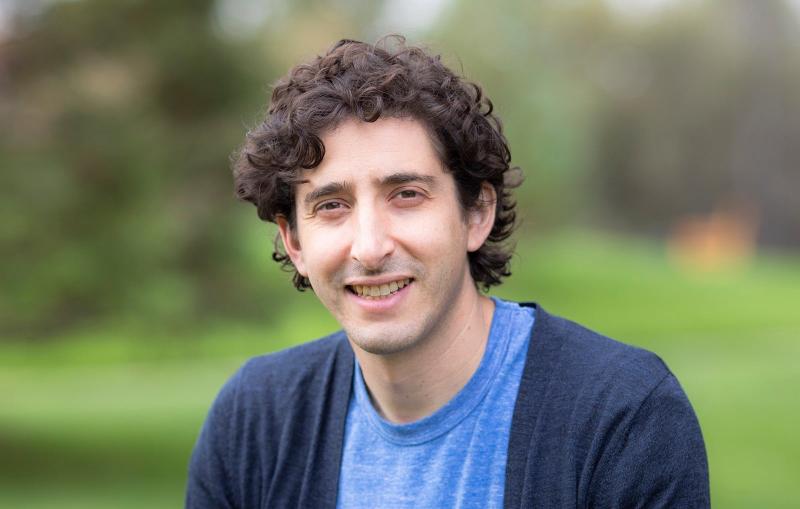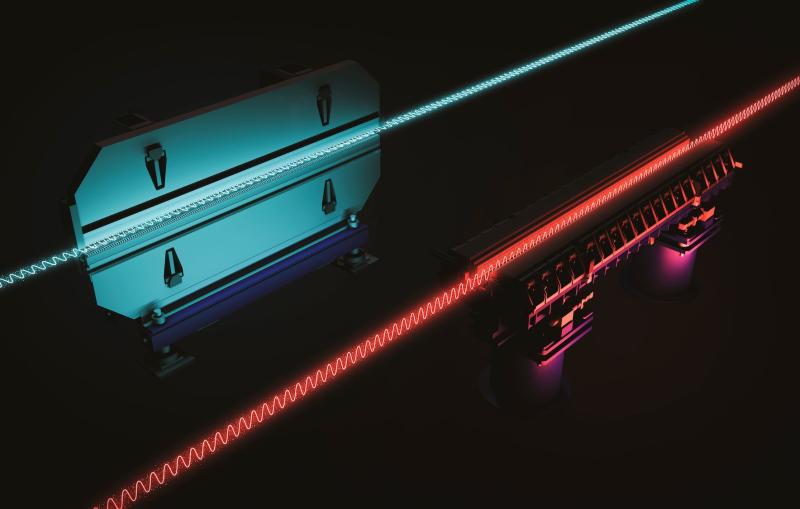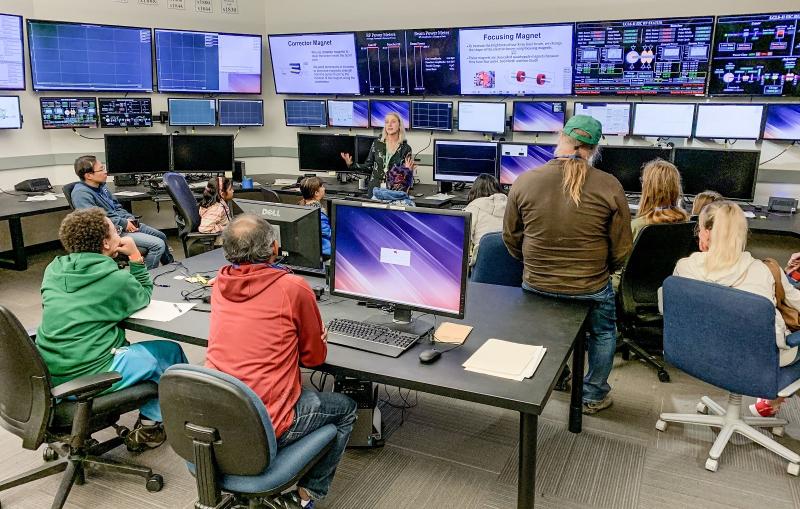A day in the life of a synchrotron duty operator
For mechanical engineer Sarah Edwards, SSRL is the ultimate classic car.
By Andy Freeberg
X-ray work can be grueling. As a duty operator at the Stanford Synchrotron Radiation Lightsource (SSRL), Sarah Edwards works 12-hour shifts starting at either 6 a.m. or 6 p.m.
“We do four days on, four days off, and then four nights on, four nights off,” says Edwards.
But to Edwards, a mechanical engineer from Australia with a background in the automotive industry and an itch for adventure, the schedule is a perk: “It’s hard, but it’s also amazing, especially when you live in California and you want to go to a national park when the rest of the world isn’t there.”
SSRL is a national user facility at the Department of Energy’s SLAC National Accelerator Laboratory, and visiting scientists from around the world put in tens of thousands of hours each year running experiments with the facility’s powerful X-ray beams.
While it’s the duty operator’s job to make sure each of SSRL’s 32 experimental stations is delivering extremely bright, highly reliable X-rays as designed, Edwards says their real priority is the people at the beamlines.
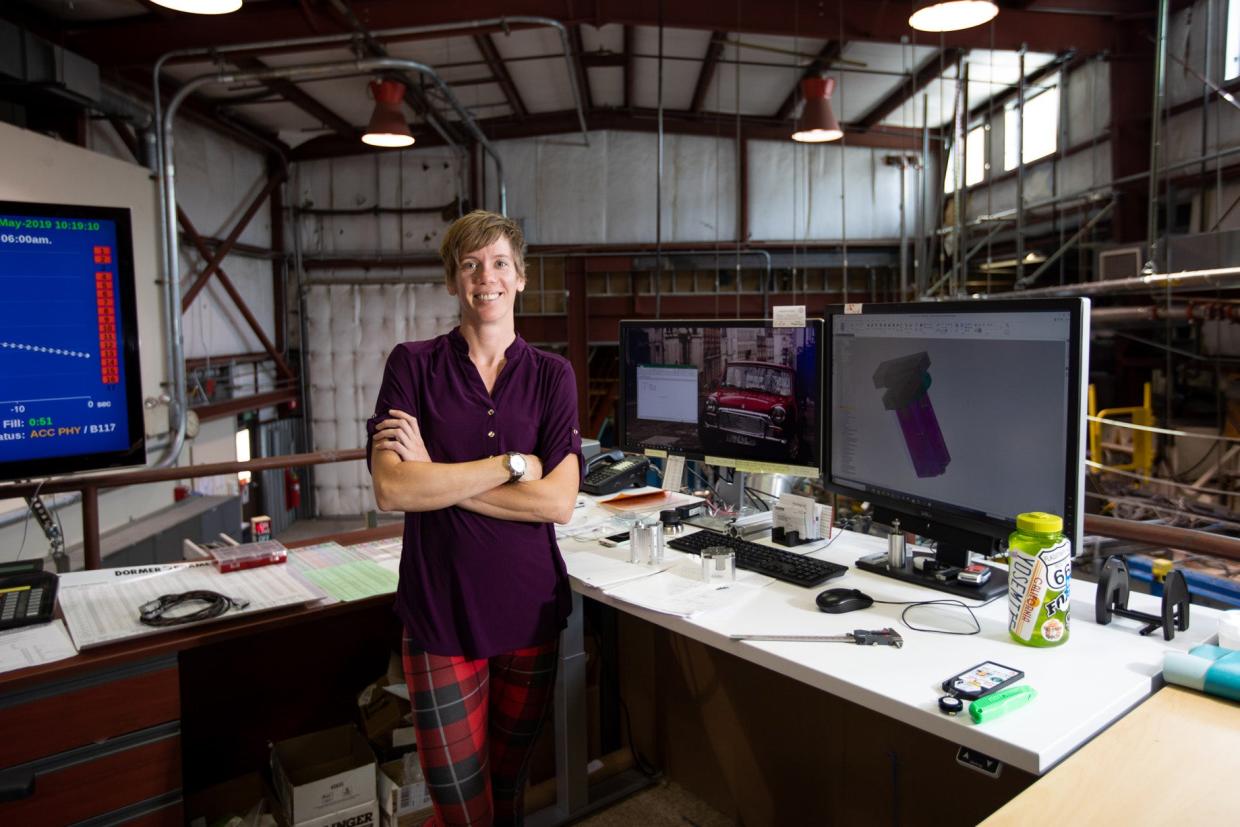
“Every time I put someone online, I’m there to make sure that they’re going to be safe, but I’m also there to learn what they’re doing,” says Edwards. She adds that meeting the users and learning about their science is one of the best parts of the job.
On any given day SSRL might simultaneously host one team examining a mechanism related to Alzheimer’s disease, another scrutinizing batteries in atomic detail and another uncovering a lost ancient text. Edwards recently met a team studying a soil sample from the bottom of the Chicxulub impact crater in Mexico, which is theorized to have led to the extinction of the dinosaurs.
“He opened a suitcase and showed it to me,” she recalls. “And he could show me the layers of earth – this was before the crater impact, and this is the black layer that shows when the dinosaurs died, and here is all the sediment that settled afterward from the burning and falling ash and I was like, ‘Whaaat?!’ I love the fact that any day at SSRL you can talk to people like that, who are discovering amazing things.”
Edwards joined the team of five SSRL duty operators a little over a year ago as its second-ever female, but she says the diversity of the team goes beyond gender: “We have a plumber, a scientist, one who’s a machinist at heart and one who’s more of a software engineer. So we all have our strengths and we learn a lot from each other.”
Edwards says her own strength is as a ferocious learner and a hands-on problem solver, which she credits to her background in the automotive industry.
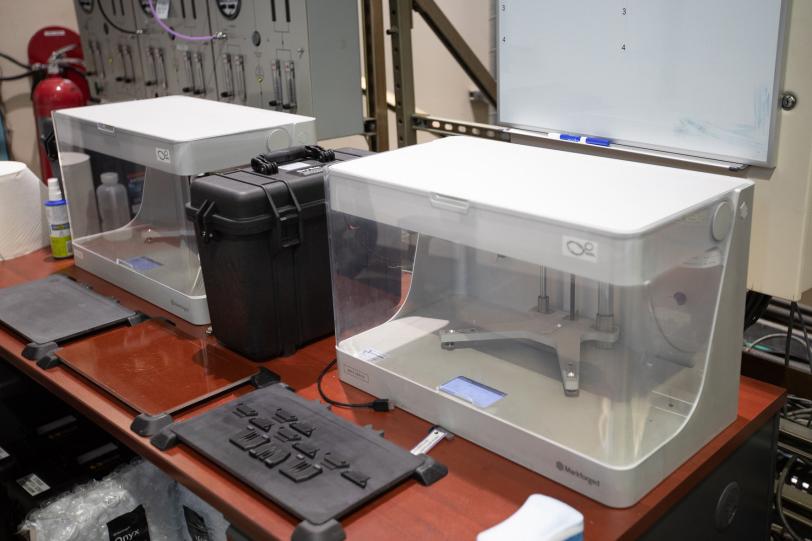
After growing up and studying engineering in Australia, Edwards got a job at General Motors in Melbourne. When GM decided to close up its Australian operations, Tesla swooped in to hire their talent.
Edwards, an avid mountain biker and rock climber, had always wanted to travel and so she accepted the offer to come to the Bay Area and work on electric vehicles. When she arrived in California she bought a van to enable her adventures, but found the hectic pace of Tesla made it difficult to find the time to get away.
After 16 months at Tesla Edwards decided to try out “van life” full time. She spent a month in a friend’s garage where she added a bed, solar panels, a charging system, and everything else she’d need for a year on the road.
When she finally returned to the Bay Area, a chance connection brought her to SSRL on a tour, which then turned into a new career.
Edwards says one of the things she loves about working at SSRL is that it reminds her of working on a classic car.
“I’ve always worked in automotive, and I would happily work on a car from the ‘60s or ‘70s as opposed to a car from this millennium because they have too many computers,” she says. “Here at SSRL you can get that same feel – you can figure things out because a lot of things are mechanical.”
Whether it’s tearing open a control panel, assembling a complicated new part or dialing up the operators of the SPEAR3 synchrotron accelerator that powers SSRL in the middle of the night to find out what’s going on, being a duty operator at SSRL demands exactly the kind of continual learning and problem-solving that Edwards loves.
“Every time someone comes here for the first time, the duty operators give them a safety talk, let them know where to find things and let them know what we’re capable of in terms of our machine shop and 3-D printing,” Edwards explains. “I think that’s one of the things that SSRL is most famous for and prides ourselves on – no matter what you’re trying to do, we’ll make what you need to make it work.”
Contact
For questions or comments, contact the SLAC Office of Communications at communications@slac.stanford.edu.
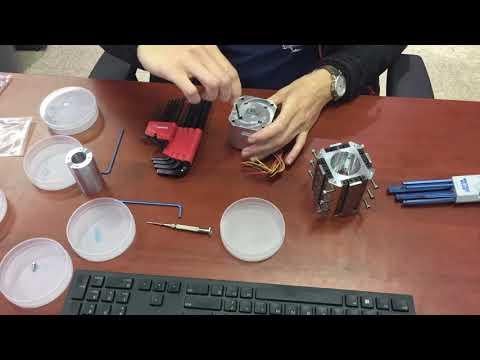
Assembling a Z Stage
A time-lapse video Sarah Edwards made of herself assembling a z-stage, a device that allows SSRL users to move their samples vertically in small increments over a 40 millimeter range during beamline scans. The z-stage was designed by Edwards and machined by SLAC's Geovanni Gordon. (Courtesy Sarah Edwards/SLAC National Accelerator Laboratory)
About SLAC
SLAC National Accelerator Laboratory explores how the universe works at the biggest, smallest and fastest scales and invents powerful tools used by researchers around the globe. As world leaders in ultrafast science and bold explorers of the physics of the universe, we forge new ground in understanding our origins and building a healthier and more sustainable future. Our discovery and innovation help develop new materials and chemical processes and open unprecedented views of the cosmos and life’s most delicate machinery. Building on more than 60 years of visionary research, we help shape the future by advancing areas such as quantum technology, scientific computing and the development of next-generation accelerators.
SLAC is operated by Stanford University for the U.S. Department of Energy’s Office of Science. The Office of Science is the single largest supporter of basic research in the physical sciences in the United States and is working to address some of the most pressing challenges of our time.

